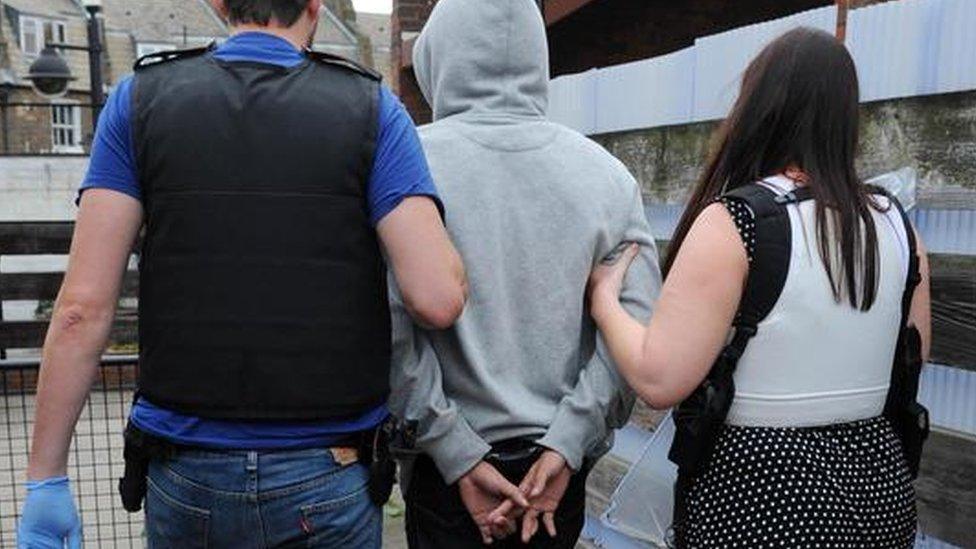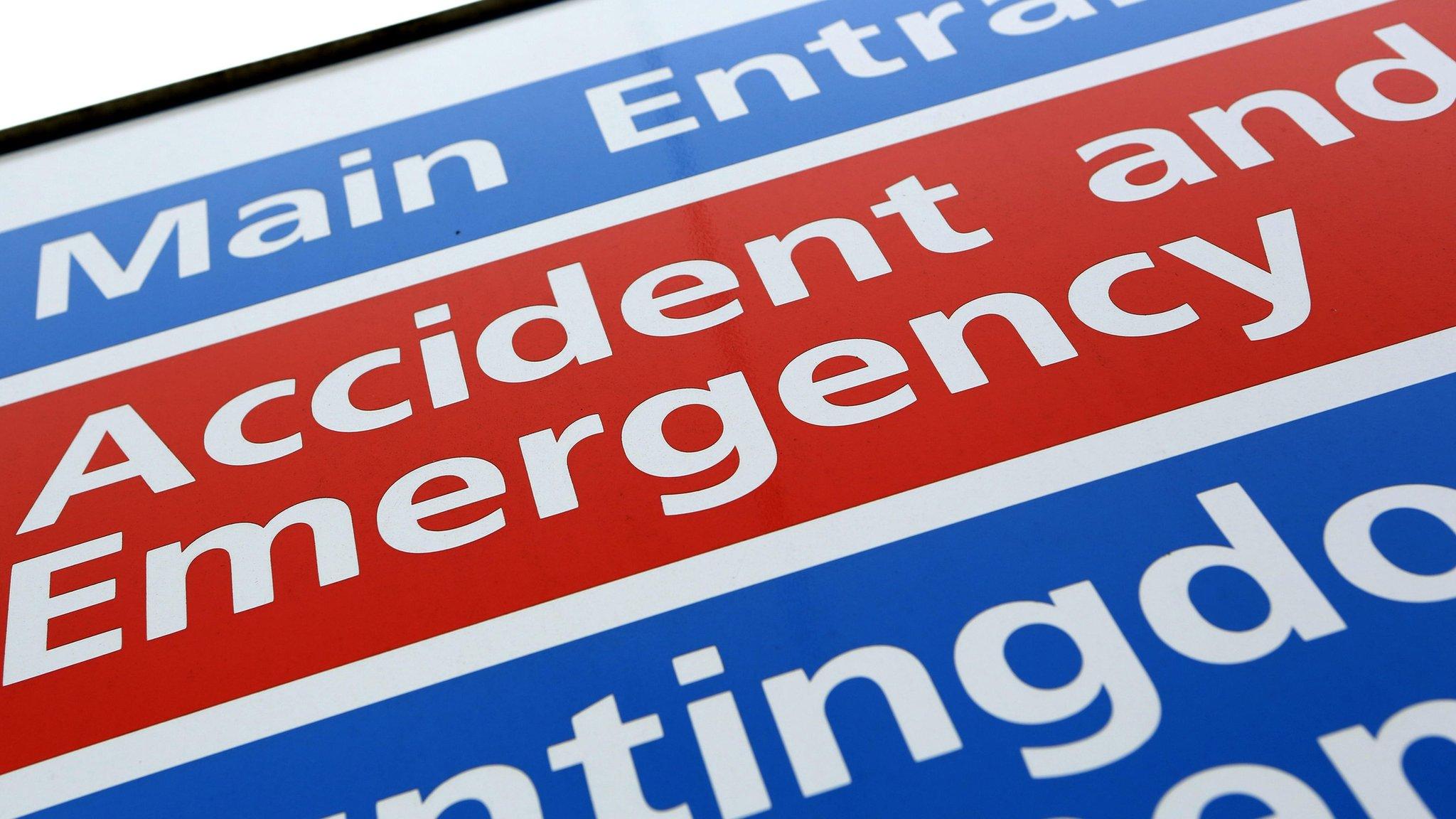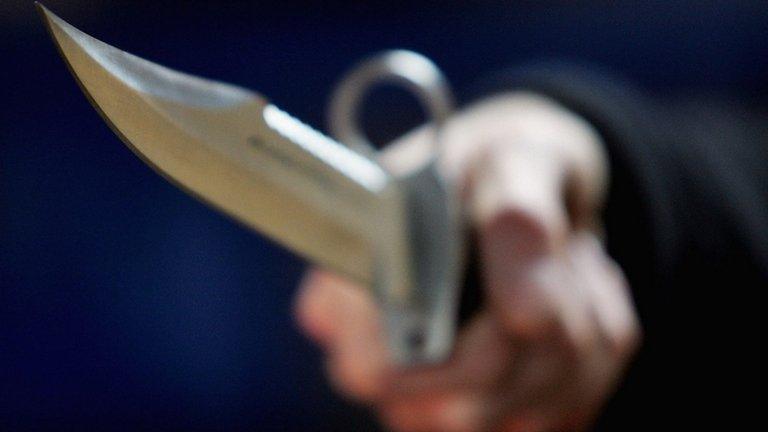Homicide and knife crime rates 'up in England and Wales'
- Published
- comments

Figures suggest homicide and knife crime are on the increase in England and Wales
Cases of homicide and knife crime recorded by police in England and Wales are rising, figures suggest., external
Some 4.8 million offences of all types were recorded in 2016, up 9% on 2015.
The Office for National Statistics said this increase was "thought to reflect changes in recording processes and practices rather than crime".
Despite those factors, statisticians said homicide (up 21%) and knife crime (up 14%) appeared to show "smaller but genuine increases".
The ONS said also there had been small increases in the number of burglaries and robberies, offences where recording practices were less likely to have been a factor in the rise.
Key statistics for 2016 include:
695 homicides recorded, up 21% from 576 in 2015. These included 96 cases of manslaughter from the 1989 Hillsborough disaster recorded by a coroner last April
32,448 knife crimes recorded - an increase of 14% on the previous year
39,355 rapes recorded, up 13%
5,864 firearms offences, up by 13% largely due to a rise in crimes involving handguns
55,824 robberies, a rise of 10%
92,868 car thefts - 16% more than in 2015
The ONS said there had been a "near-continual decline" in police recorded crime between 2004 and 2014, but since the year ending March 2014, total police recorded crime had increased.
Analysis: Why nobody seems to know if crime is up or down
The separate Crime Survey of England and Wales, which estimates offences including those that are not reported to police, suggests that 2016 crime levels were broadly stable with 2015.
It suggested about two in every 100 adults had been victims of violent crime last year, compared with a peak in 1995 of five in every 100 adults.
Overall, there were about 11.5 million incidents included in the Crime Survey, which records the experiences of adults aged over 16 based on interviews, after fraud and computer misuse offences were included for the first time.
They made up 5.4 million of the total, meaning year-on-year comparisons are meaningless.
Stripping out the two categories gives a tally of 6.1 million, which the ONS said was not a "statistically significant" change from the previous year, and was still 40% below peak crime levels of 19 million in 1995.
These are the final sets of crime statistics to be released before the general election.
- Published26 April 2017

- Published19 January 2017

- Published20 October 2016
